The GIGABYTE Aorus AX370-Gaming 5 Review: Dual Audio Codecs
by Gavin Bonshor on November 14, 2017 12:30 PM ESTBIOS
GIGABYTE has a relatively basic but user friendly BIOS which features a black theme with red trim and white text. Even though it doesn’t quite have the futuristic look of other BIOS implementations, it still provides an easy to look at interface.
With a basic initial BIOS, the Gaming 5 motherboard doesn’t feature separate advanced or basic modes. On the right-hand side, however, there is a panel that when clicked slides out and displays information such as CPU frequency and temperature, memory speeds and voltage, as well as the core voltage and the voltage on the +12v CPU power input.
Overall the BIOS does its job and it does it without much pizazz, but it worked during our testing.
Software
Like MSI and ASUS, GIGABYTE is known for plying end users with various amounts of flashy, albeit useful, software. With the board focusing on audio, the AX370-Gaming 5 uses the Sound Blaster X-Fi 5 audio software utility. With the inclusion of the gamer-focused Killer E2500 networking chip, the package also bundles the latest iteration of the Killer Control Center application, which uses a new interface that is easier to use than the Windows 8 mess. Also, rather useful is the GIGABYTE App Center which allows a quicker route to all of the installed GIGABYTE apps.
The GIGABYTE App Center might have little function in itself, but it offers an easy pathway to other GIGABYTE related applications, as well as access to Windows related settings and includes Windows update, Windows Firewall and power options. The App Center also allows for easy navigation to a host of installed third-party apps as well including Google Chrome.
Completely designed for audio only, the Sound Blaster X-Fi 5 software offers a range of different customizable options and pre-sets for different types of audio from music (the default profile) to real-time strategy games and driving simulators.
The Killer Control Center allows users to set speed limits on their network, as well as limiting certain applications and programs in terms of priority, giving higher priority to elements such as VOIP over downloads. This is useful for multiple different data streams coming from one device. The interface is now relatively simple to navigate and it will give you instant access to your network configurations as IP address, MAC address and your current gateway are all visible. Users can configure six different levels of priority per application, with the default for all apps being 'Level 4'.


_thumb.jpg)
_thumb.jpg)
_thumb.jpg)
_thumb.jpg)
_thumb.jpg)
_thumb.jpg)

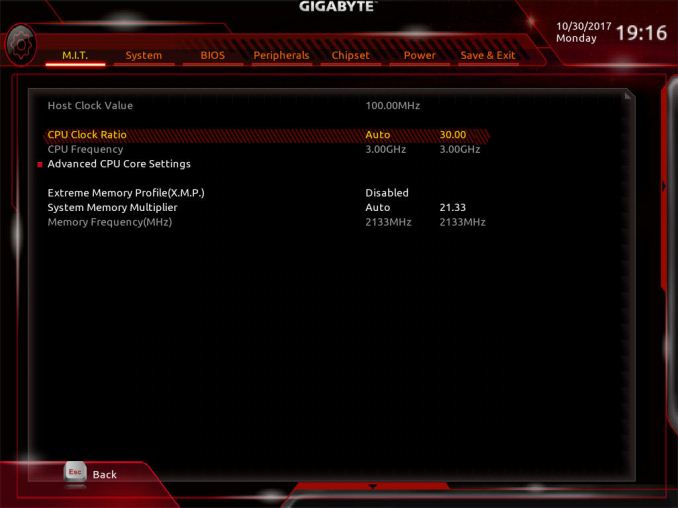
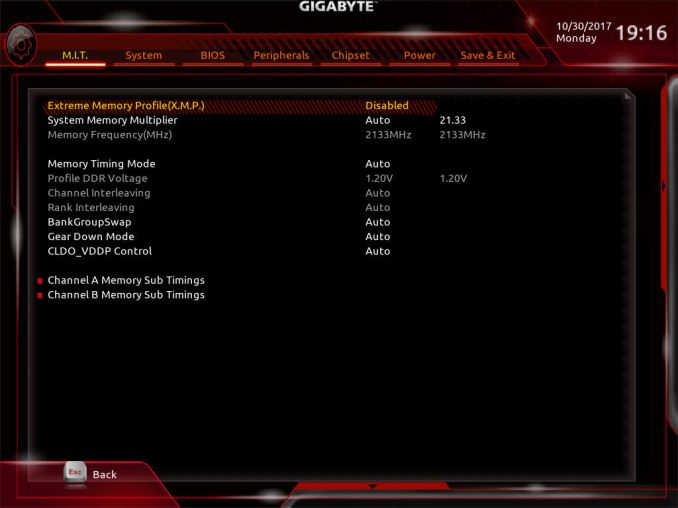
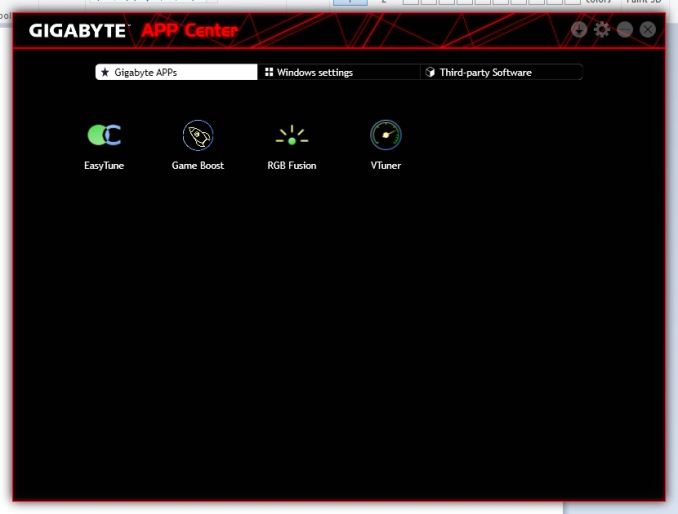
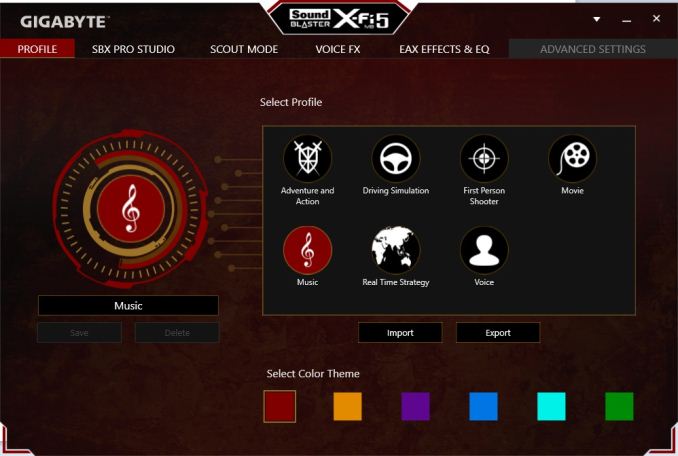
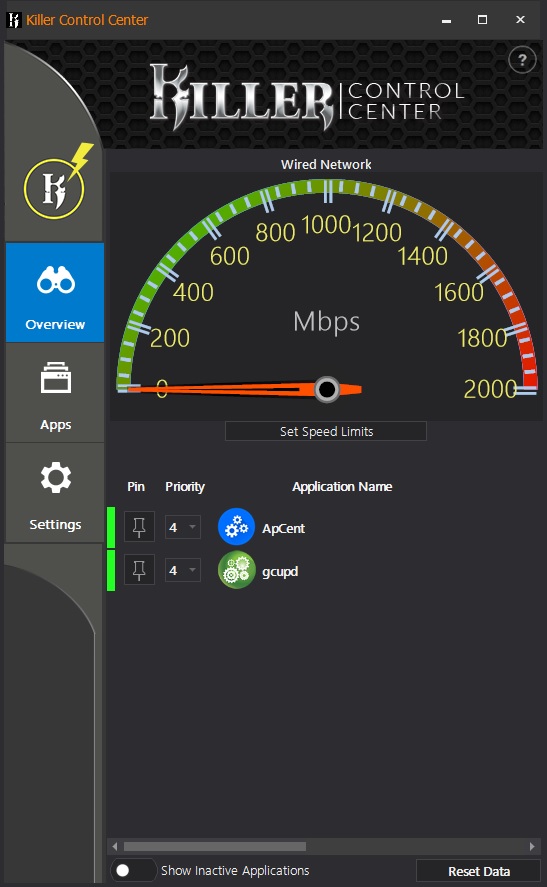














34 Comments
View All Comments
Samus - Wednesday, November 15, 2017 - link
True, but the problem is most of the DAC's have a lower overall quality than many high end onboard DAC's. Especially wireless headphones. Until I found the SteelSeries H (Now the Siberia I guess...) I had pretty much given up finding wireless headphones with a decent DAC.PeachNCream - Tuesday, November 14, 2017 - link
Killer NIC... *sad panda*Flunk - Tuesday, November 14, 2017 - link
Only an issue if you want two Ethernet ports, there is also an Intel NIC on there.wolrah - Tuesday, November 14, 2017 - link
@Flunk that doesn't excuse it, that makes it worse. They clearly understand that Intel NICs are better, but they only half-assed it. Killer is gimmicky garbage. It needs to go away.The only non-Intel network card I want to see on a motherboard is one of the NBaseT products, and only because Intel doesn't yet make one.
DanNeely - Wednesday, November 15, 2017 - link
No, it means they clearly understand the market. Of the people who care about the nic brand, half have drank killer's koolaid and know it makes them game better, and half know that intel's the way to go because their drivers are much less garbage than the competition. This lets them supply both of the main halves of the care about nic brand market. The group of people who care about nic brand and need 2 of them is much smaller; losing them and/or sending them to a different model in the lineup isn't a major loss.PeachNCream - Thursday, November 16, 2017 - link
Does Qualcomm still own the Killer NIC brand? I thought that was their product operating under a subsidiary.nismotigerwvu - Tuesday, November 14, 2017 - link
There's a typo on your conclusions page. It should read "gigabit ethernet" not "gigabyte ethernet".Dr. Swag - Tuesday, November 14, 2017 - link
Could you guys add some more in depth vrm stuff into the mix? Like current capabilites, vrm temp measurements, etc. A lot of AM4 boards have sub par VRMs that don't have proper temp protections and stuff, so it would be really nice if you guys could add some stuff that looks into this sort of stuff.Horza - Tuesday, November 14, 2017 - link
The VRM information is incorrect as far as I know. It's running in 6+2 mode with, as you said, doublers on the SOC VRM so it's 6+(2x2) not 8+2.Cooe - Saturday, March 24, 2018 - link
This is correct. The flagship K7 also uses the exact same 6+(2x2) VRM setup (in addition to everything else aside from it's inclusion of a external BCLK generator & additional LED strip on the I/O shield).